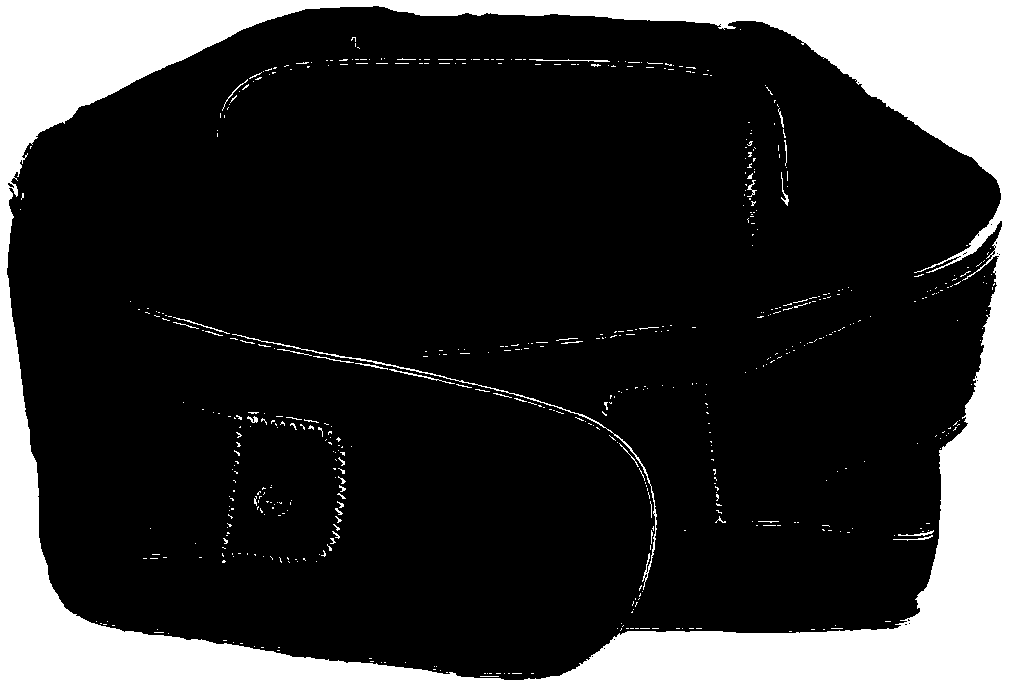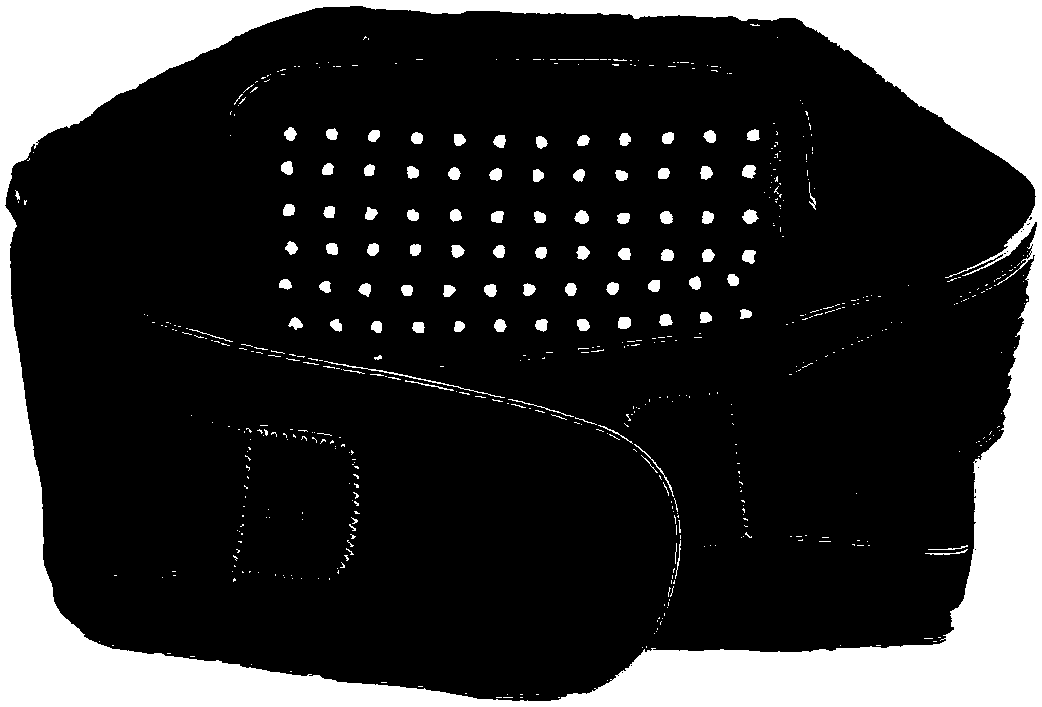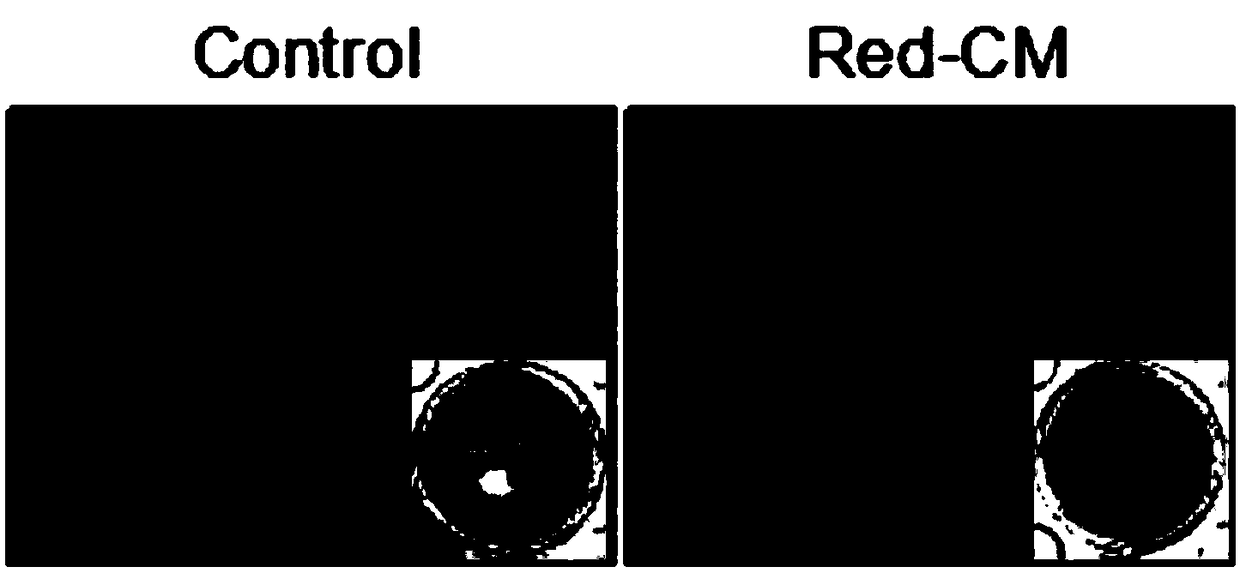Application of LED-red light with wavelength of 610-650 nm in relieving symptoms of lumbar muscle strain
A lumbar muscle strain and red light technology, applied in the field of photomedicine, can solve problems such as difficult to cure lumbar muscle strain, affect the quality of life of patients, and easy to relapse, so as to relieve the symptoms of lumbar muscle strain, simple and easy clinical application, and improve life quality effect
- Summary
- Abstract
- Description
- Claims
- Application Information
AI Technical Summary
Problems solved by technology
Method used
Image
Examples
Embodiment 1
[0025] Example 1: Relief of 610-650nm LED-red light irradiation on the symptoms of low back pain caused by lumbar muscle strain
[0026] 1. Preparation of belt
[0027] Phototherapy belt: Arrange the light strips with red light with a wavelength of 610-650nm neatly and sew them between the nylon cloth and the black filter at the waist support of the belt for health care, and the total light intensity is 10mW / cm 2 . The tail of the power supply is exposed outside the belt, and it will light up when it is connected to the socket. The magic glue is sewn on the closure of the belt, and the size of the belt can be adjusted and glued according to the size of the waist. The structure of the belt is as figure 1 (before power on) and figure 2 (after power-on).
[0028] Heat belt: replace the light strip with 610-650nm wavelength red light in the phototherapy belt with a heating device, which generates heat equivalent to that produced by the light strip.
[0029] 2. Experimental ...
Embodiment 2
[0040] Example 2: Effect of 610-650nm LED-red light irradiation on osteogenic differentiation of mouse bone marrow mesenchymal stem cells
[0041] 1. Experimental method
[0042] 1.1 Alizarin red staining was used to detect the osteogenic differentiation ability of mouse bone marrow mesenchymal stem cells
[0043] The back skin of the mouse was taken for in vitro culture, and the skin was irradiated with 610-650nm LED-red light for 30 minutes, and the light intensity was 20mW / cm 2 (The distance is 19.5cm). Collect the culture medium after light irradiation, call this culture medium as the conditioned medium, add the conditioned medium to the mouse bone marrow mesenchymal stem cells cultured in vitro, induce the mouse bone marrow mesenchymal stem cells to differentiate into osteoblasts, and after 14 days Alizarin red staining was used to detect the osteogenic differentiation ability of mouse bone marrow mesenchymal stem cells.
[0044] 1.2 Experimental group design
[0045]...
Embodiment 3
[0050] Embodiment 3: 610-650nm LED-red light irradiation increases the bone mass of C57BL / 6 mice
[0051] 1. Experimental method
[0052] 1.1 MicroCT detection of mouse femur bone mass
[0053] Apply 610-650nm LED-red light or natural light to irradiate 8-week-old male C57BL / 6 mice for 2 hours a day, with a light intensity of 50mW / cm 2 (The distance is 18cm). After 6 months, the mouse femurs were taken out for MicroCT scanning.
[0054] 1.2 Experimental group design
[0055] The experiment was divided into control group and experimental group according to natural light irradiation and red light irradiation.
[0056] 1.3 Experimental testing items
[0057] mouse femur bone mass
[0058] 2. Observation results
[0059] The result is as Figure 4 As shown, the results of MicroCT showed that compared with the control group, the bone mass of mice in the experimental group irradiated with LED-red light increased, indicating that 610-650nm LED-red light irradiation can increa...
PUM
 Login to View More
Login to View More Abstract
Description
Claims
Application Information
 Login to View More
Login to View More - R&D
- Intellectual Property
- Life Sciences
- Materials
- Tech Scout
- Unparalleled Data Quality
- Higher Quality Content
- 60% Fewer Hallucinations
Browse by: Latest US Patents, China's latest patents, Technical Efficacy Thesaurus, Application Domain, Technology Topic, Popular Technical Reports.
© 2025 PatSnap. All rights reserved.Legal|Privacy policy|Modern Slavery Act Transparency Statement|Sitemap|About US| Contact US: help@patsnap.com



